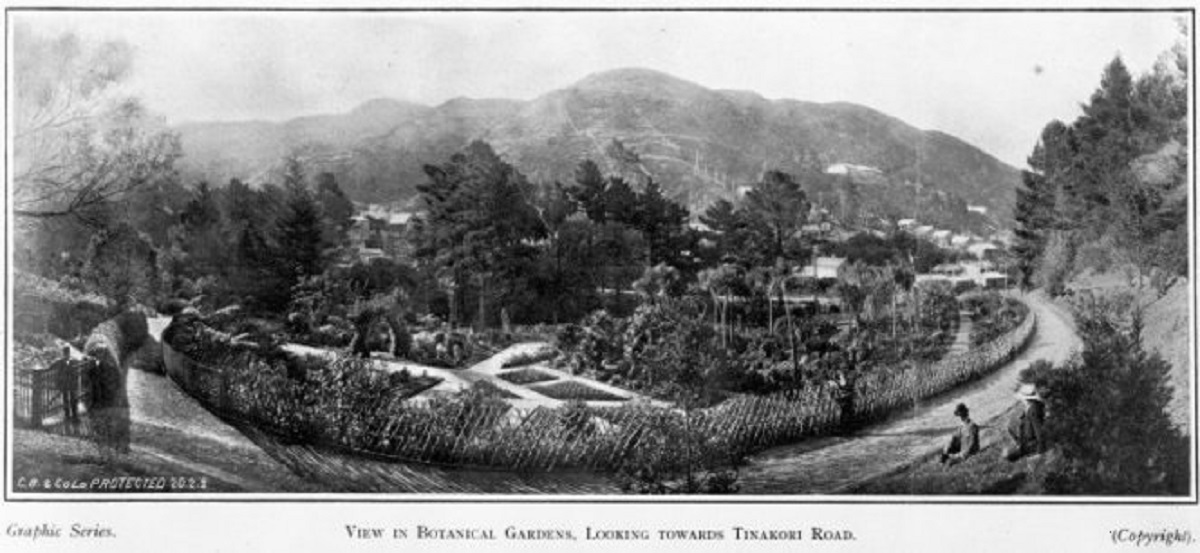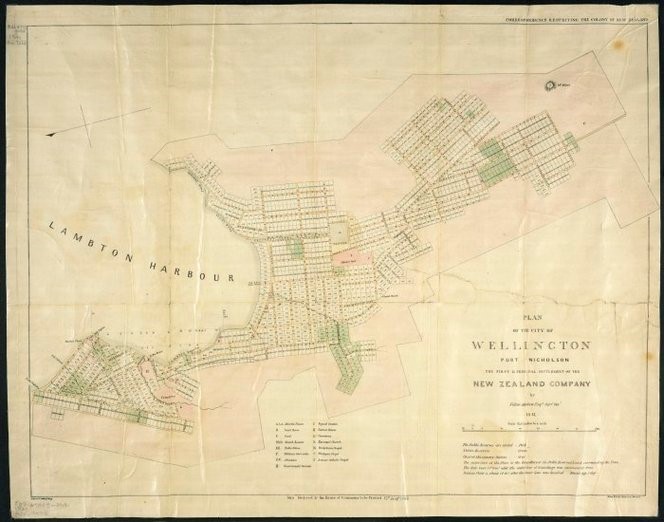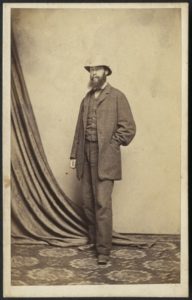
The Wellington Botanical Gardens: An Origin Story.
By Murray Hemi
The New Zealand Company chose Wellington as the first location for the organised settlement of New Zealand. William Mein Smith, the company’s chief surveyor, was instructed to surround the new township with a space for public recreation; the Town Belt. (See the pink shaded area in Mein Smith’s 1839 Town Plan below). Unfortunately, Mein Smith drew the plan on top of existing Maori kainga and clearings which, by no co-incidence, included some of the best waterfront and horticultural land in the area.

Mein Smith’s Original Plat
Maori soon discovered that with the stroke of a pen their land had been allocated to settlers or set aside as public space. Despite the Town Plan, Governor Hobson visited Wellington in 1841 and promised Maori their cultivations would not be disturbed. On that same visit Governor Hobson also proclaimed the Town Belt a Public Reserve – effectively transferring to the Wellington Town Council the very same land he had just promised Maori the Crown would protect.
Confusion reigned. Maori continued living on and using land in the Town Belt while resisting Europeans squatters. Conversely, settlers sought to stop Maori use of the Town belt and prevent them occupying land that had been allocated to them.
In May 1844, the Crown’s Superintendent of the Southern District, Major Richmond, appropriated five small areas from the Town Belt including 12 acres for the Botanical Gardens – part of the Maori Kumutoto settlement. Three years later Colonel GWA McCleverty, on behalf of the Crown, returned roughly 10 acres of this land to Maori. Governor Grey then re-acquired the same land on behalf of the Crown in 1852. Grey’s supposed ‘purchase’ was marginal but that did not stop him from gifting the land to the Wesleyan Mission for an Industrial School. The School was never established and in 1865 the land was sold to the Wellington Provincial Council and set aside as a public park.

Dr. James Hector
In 1867 Dr. James Hector suggested the site be used as both a public park and ‘a Garden for botanical, horticultural and acclimatisation purposes’. The 1869 Botanic Garden Act saw the establishment of the Botanical Gardens and the introduction of many exotic species including pheasants, fowl, emus, and, monkeys. Some of these experiments were unsuccessful. The monkeys, in particular, regularly escaped, attacked children, and terrorized neighbourhoods. (The Newtown Zoo was opened in 1906 and the monkeys and emu were transferred to more secure home – although tigers, chimps, baboons and monkeys still managed to escape).
One of the primary roles of the Botanic Garden was to trial the planting of overseas plants (and animals) to see which would be suitable for growing in New Zealand. This informed settlers on their own domestic choices of plants but also provided the basis for plantation development throughout New Zealand. Between 1870 and 1871 trial plots of newly discovered conifer species from North America, India and Japan were planted. These trees were planted throughout the country forming the seedbanks used by the Forestry Department in establishing New Zealand’s forestry industry. Today, the Botanic Garden has some of the country’s oldest surviving Pinus radiata trees.
Image Credits:
Botanical Gardens, Wellington. C B and Company Ltd : Photographs from the publication “Panoramic photographic pictures of Wellington and vicinity”. Ref: 1/2-031329-F. Alexander Turnbull Library, Wellington, New Zealand. /records/23074755
Perry, George William, 1885-1897. George William Perry (& Co) (Melbourne) fl 1855-1899 :Portrait of Dr Hector. Ref: PA2-1307. Alexander Turnbull Library, Wellington, New Zealand. /records/22836101